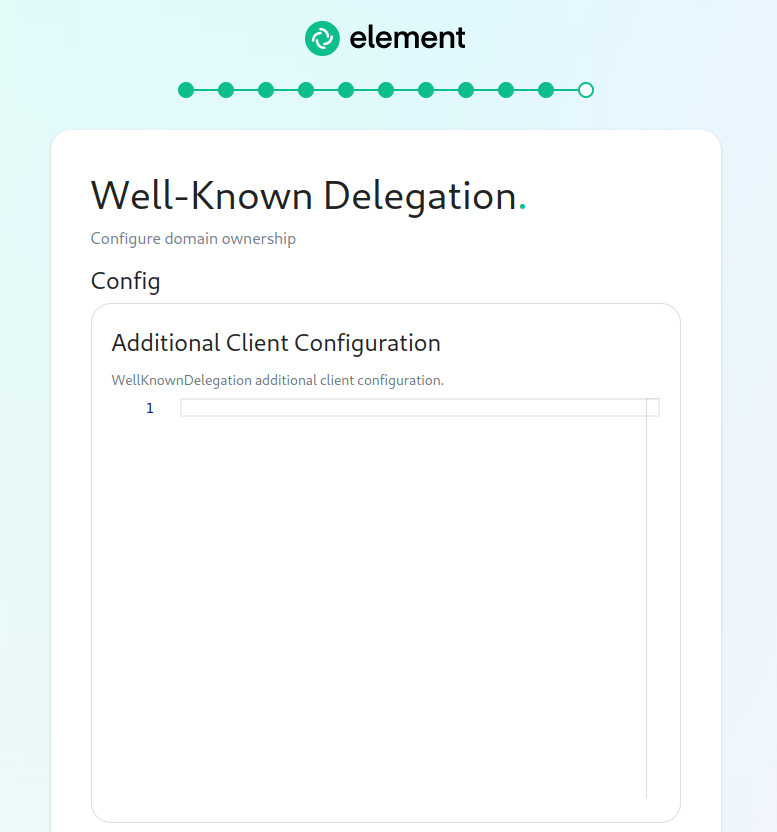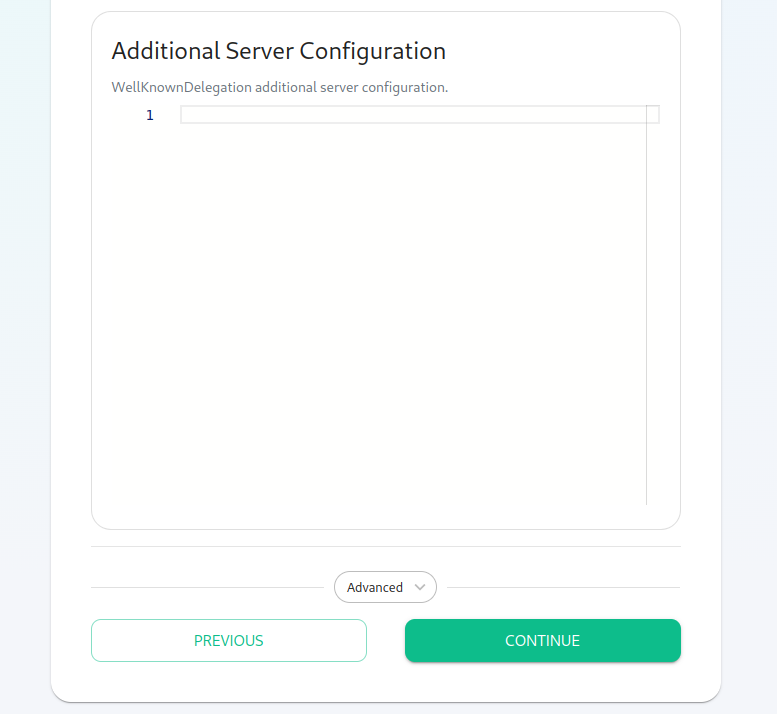Setting Up Well Known Delegation
Well Known Delegation Configuration
From the Installer's Integrations page, click "Install" under "Well-Known Delegation".
Add any client configuration here:
A sample client configuration might look like:
{
"im.vector.riot.jitsi": {
"preferredDomain": "jitsi.dev.local"
}
}
Add any server configuration here:
- Re-run the installer for the changes to take effect.
Troubleshooting the Well Know config
The clients and servers will need to be able to access these configuration settings. You can check if everything is in place with curl. The following request is useful if your base domain is actually the same as your main webserver. This curl goes directly to the ingress of the kubernetes, which is implemented with nginx. Keeping the request header as "my.base.domain" allows nginx to route the request to the correct pod.
$ curl -X GET --header "HOST: my.base.domain" "https://matrix.my.base.domain/.well-known/matrix/client"
{
"io.element.e2ee": {
"default": false
},
"m.homeserver": {
"base_url": "https://matrix.my.base.domain"
}
The above shows a correctly setup well-knwn repsponse, for the direct request to the cluster. In some setups there is a web server in front of your Element installation. In these cases the main web server should be implementing a reverse proxy for everything that is under https://my.base.domain/.well-known/matrix/ . All these requests should be sent to https://matrix.my.base.domain/.well-known/matrix/. If the main web server would run Apache, the config would look like this :
ProxyPass /.well-known/matrix/ https://matrix.MYBASEDOMAIN/.well-known/matrix/
ProxyPassReverse /.well-known/matrix/ https://matrix.MYBASEDOMAIN/.well-known/matrix/
ProxyPreserveHost On
This is the check :
$ curl -X GET https://my.base.domain/.well-known/matrix/client
{
"io.element.e2ee": {
"default": false
},
"m.homeserver": {
"base_url": "https://matrix.my.base.domain"
}
}
You can check the ingress logs. Verify the request reaching the nginx and check for the correct path. Replace ${XXXX} with the actual name in your deployment ( $ kubectl get pods -A will reveal that name ).
$ kubectl logs nginx-ingress-microk8s-controller-${XXXX} -n ingress
...


